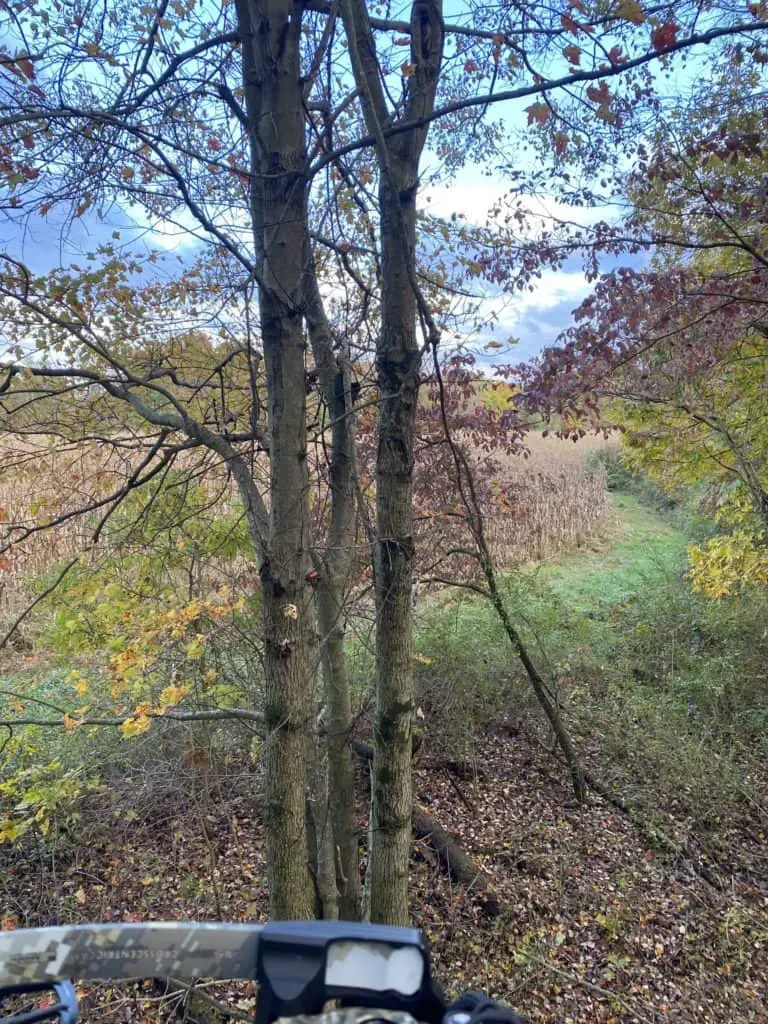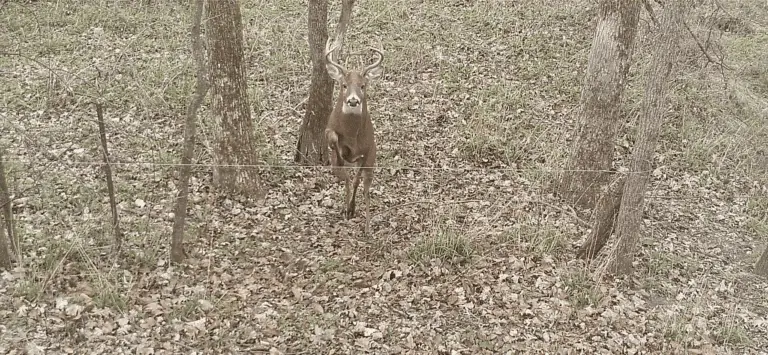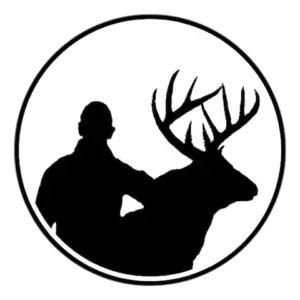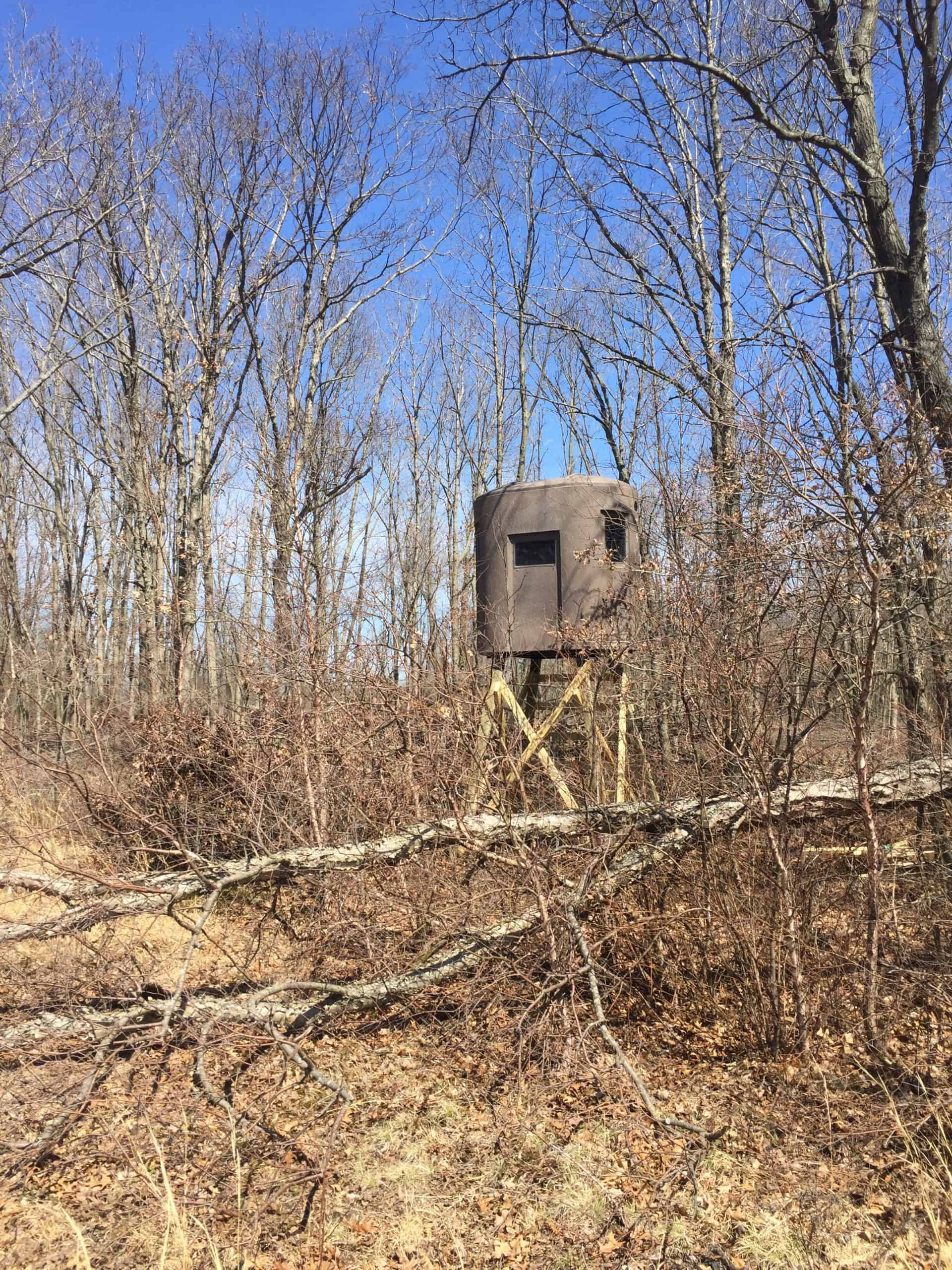If you want to know where to setup your deer stand to kill big bucks, then you came to the right place. Before we dive into the exact locations of where your stands should be, it’s important to understand that a great location is not always a good spot for your stand.
Setup your deer stands in places where deer cannot hear, see, or smell you when hunting them. Deer become harder to kill when they are pressured by your human intrusion or someone else’s. Once you find a hunting location that you can access and hunt without deer knowing you are there, the next step is to position your stand in a spot with high odds of a deer walking within shooting range of your stand.
There are several different habitat features to key in on when searching for stand locations that offer higher odds of killing deer. Once you find the exact spot to setup your deer stand, follow these 52 tips for hanging tree stands for deer hunting. But before you read that article, check out these 20 habitat features where you should setup your stand:
1. Close to bedding cover
Deer spend most of their daylight hours within the security cover they bed in. One of the best ways to kill deer, especially mature bucks, is to kill them close to where they bed during the day. The challenge with hunting bedding cover is trying to sneak in and out of their bedding areas undetected. Try to hunt bedding cover on day’s that are windy. This will help you stay undetected before, during, and after your hunt.
2. Downwind side of bedding cover
During the rut, one of the best places to hunt bucks is on the downwind side of bedding areas. Buck’s will scent check the downwind edge of bedding areas in search of hot does that are ready to breed. Hunting on the edge of bedding cover will most likely keep that buck upwind from your stand location so he doesn’t get alerted from your scent.
3. Islands of cover
Small islands of cover, or perhaps a single tree in the middle of a tall grass field, can offer fantastic hunting opportunities. Mature deer will sometimes get luck and find safe bedding areas like this because hunters will completely overlook them. Don’t underestimate these types of spots. If a deer is bedding in a spot like that then you have a very good chance of seeing him if you hunt him smart and time it right.
4. Edges
When two different types of habitat types meet, it usually creates a line of travel that deer will follow along. An example of this is a soybean field meeting up with a patch of woods. The line between these two types of habitats create an edge that deer will relate to and walk along as a transition zone. Also, deer will regularly stay close to the woods while they feed in a soybean field, just in case they see danger and need to run to cover.

5. Travel Corridors
Find travel corridors where deer trails are commonly used. Setting up a stand within shooting distance of crossing trails can help increase your odds of encountering more deer. Also look for travel corridors that parallel food sources within the cover. These parallel trails are commonly used by bucks that are trying to stay hidden while they scent-check a food source for deer and make sure it’s safe to step out and expose himself in an open field.
6. Funnels
During the rut, funnels are excellent pinch points to sit all day waiting for a mature buck to walk by. Look for funnels to setup your deer stand because if a deer walks by the odds of you get a crack at him are good. Funnels provide some level of security cover so bucks will comfortably walk through them unless they associate the funnel with danger.
7. Between bedding and food
In general, deer will predictably travel from bedding areas to food sources in the evening and then back to bedding areas during the night and into the morning hours. One of the best ways to hunt deer without them knowing it, is by hunting locations between bedding and food. These are transition zones where deer don’t typically spend a lot of time lingering around because they have a place in mind where they want to be.
8. Inside corners
Deer love to travel in a path of least resistance and commonly cut through fields that have an inside corner next to cover. Humans do the same thing. Have you ever noticed the dead grass at the corner of a sidewalk that’s caused from people walking on the grass? Humans will cut that corner and walk through the grass just like deer will cut the corner of an open field.
9. Saddles
A saddle is low spot in the middle of two higher spots on the top of a ridge. Low spots on the top of a ridge are common areas for deer to cross from one side of a ridgetop to the other. Hunting at the neck of a saddles will help you keep your scent high off the ground and moving in a predictable way to keep your scent from swirling.
10. Sides of a ridge
Bucks and does often travel parallel with a ridge about 2/3 the way up from the bottom of the ridge. Walking along the side of a ridge help’s deer from being sky-lined by predators and offers a better vantage point for them to see and smell danger. Hunters should find the trail that parallels the ridge and set up a stand within shooting range and downwind from the trail.
11. Fence gaps
A fence gap in the right spot along the fence line can funnel every deer in an area to walk right in front of your stand. If you are hunting close to a fence and there is no gap in the fence, then create one if you have permission to. Building a fence and creating a gap is also an excellent way to enhance deer travel through a specific spot to increase shot opportunities.

12. Creek and river crossings
Most creek crossings have a spot along the creek that’s easier to cross than others. These types of spots will pinch deer down at specific locations and help you ambush deer that cross. You might consider using the creek itself as your access in and out of your stand to help say undetected from deer seeing you. Lastly, deer will travel along a creeks edge which will provide another direction of travel to hunt over.
13. Ends of Drainage ditches
The spot where a ditch ends are usually great locations for a tree stand, especially if those ditches are hard for deer to cross because they are wide or steep. Deer don’t want to go in the ditch if they don’t have to, so they will walk around the end of it to go from one side to the other.
14. Roads or pathways
Deer will commonly walk along roads or wide trails because they offer a path of least resistance. If deer feel safe walking down a road to go to from Point A to Point B then they will do so.
15. Swamp crossings
It’s very common for a swamp to have higher areas within that swamp where deer will travel. Deer would rather walk through those higher spots then walk in deeper waters. Try to find a spot where higher ground within the swamp pinches deer movement down and place your stand at that intersection.
16. Water
Hunting over a water source is a great way to attract deer close to your stand. Water holes work better during unseasonably warm weather and during evening hunts as deer are heading towards destination food sources. Mature bucks seem to be more comfortable drinking from waterholes during daylight hours when they are located within security cover.
17. Food Sources
Hang your stand close to food sources and focus on hunting those locations during evening hours. Don’t forget to hang stands close to fruit trees and mast producing trees. Food sources will peak in attraction at different times throughout the season so hang stands at each food source location where you expect deer to feed.
18. Staging areas
When deer get up from their beds and start walking toward destination food sources they will typically walk through staging areas. These areas are usually the last area of security cover that deer walk through before stepping out into open fields. However, you might have a small opening in the woods or a travel corridor that can make excellent staging areas. These are excellent places to hang stands and even plant a small honey hole food plot within.
19. Scrapes
During the pre-rut and rut, bucks are using rubs very frequently. Hang your stands within shooting range of active scrapes or create a mock scrape with a hemp rope. Scrapes help to bring deer movement within shooting distance from your stand. When bucks walk by, they will most likely stop in the scrape to mark their territory and offer you a shot opportunity.
20. Rubs
Rubs are positive confirmation that a buck has been there. Try to find several trees that have been rubbed in an area and see if they indicate a line of movement that the bucks travel. If you can identify a rub line and understand how bucks move through that area, you can use that to your advantage to figure out where to hang your stand. Find a spot where the rub line meets up with another habitat feature and you will find yourself a great spot in intercept a buck.
Conclusion
Hang your stands in areas where you can hunt deer without educating them of your human intrusion. If you aren’t sure if deer movement is being impacted by human intrusion, read this article. Once you find a good area to hunt, start to key in on the habitat features listed in this article and set up your stands within shooting range of expected deer movement. As a bow hunter, I’m always setting up my stands somewhere between 10 – 30 yards away from expected deer movement.


